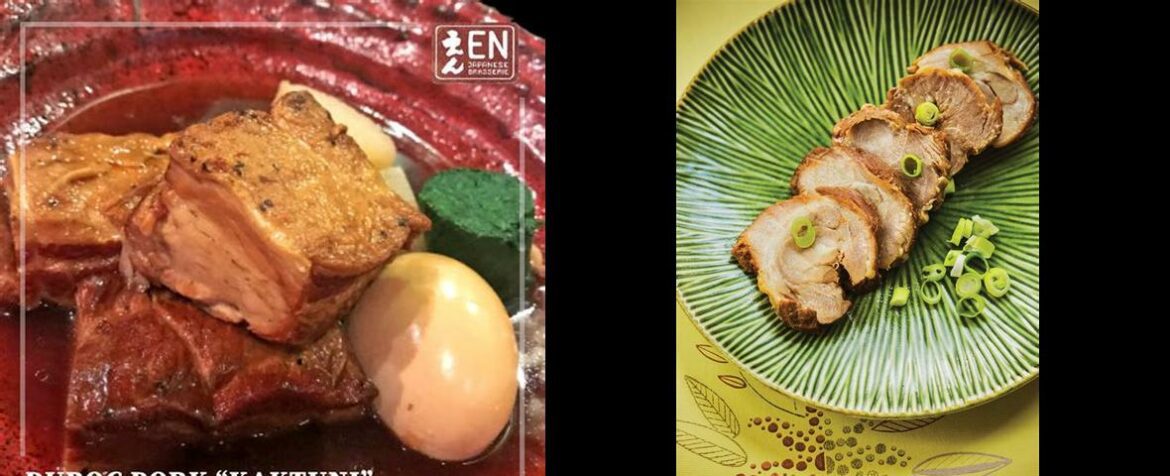Chashu vs kakuni: Chashu vs Kakuni: A Culinary Clash of the Pork Titans!
Get ready to embark on a mouthwatering adventure through the tantalizing world of Japanese pork delicacies. In this epic battle of flavors, we pit Chashu against Kakuni, two titans of the porcine realm, each vying for the crown of ultimate pork perfection.
If you’re a pork aficionado, you’re in for a treat. We’ll dive into the sizzling details, answering all your burning questions about Chashu vs Kakuni. Which one will reign supreme on your plate? Are you Team Chashu, with its melt-in-your-mouth tenderness and savory glaze? Or will Kakuni win your heart with its succulent, braised pork belly that practically dissolves on your tongue?
Prepare to have your taste buds tantalized and your culinary curiosity sparked as we explore the similarities, differences, and secret techniques behind these delectable Japanese pork dishes. Whether you’re a novice foodie or a seasoned connoisseur, this blog post will leave you craving a steaming bowl of ramen topped with either Chashu or Kakuni.
So grab your chopsticks and join us on this culinary journey through the flavors, textures, and traditions of Chashu and Kakuni. Let’s settle the age-old debate once and for all: Chashu vs Kakuni – who will emerge as the true champion of Japanese pork delights?
Chashu vs Kakuni: A Culinary Journey into Japanese Pork Delights
In the realm of Japanese cuisine, two dishes stand out as prime examples of culinary artistry and delectable flavors: Chashu and Kakuni. Both dishes feature slow-cooked pork belly, marinated or braised in a symphony of soy sauce, mirin, sugar, and an array of seasonings, resulting in tender and flavorful masterpieces. While they share similarities, Chashu and Kakuni embark on distinct journeys of taste and texture, each offering a unique experience to tantalize the palate.
Chashu: A Flavorful Symphony for Ramen and More
Chashu, a beloved topping for ramen, is crafted from thinly sliced pork belly, meticulously marinated in a sweet-savory soy sauce blend. This culinary masterpiece undergoes a lengthy cooking process, slow-cooked for hours until it achieves a melt-in-your-mouth texture. The result is a symphony of flavors, an umami-rich delight that harmonizes perfectly with the🍜 noodles and broth in a ramen bowl.
Beyond its ramen fame, Chashu also shines as a versatile ingredient, gracing dishes such as sushi, dumplings, and stir-fries with its savory presence. Its versatility makes it a culinary chameleon, adapting to various culinary creations while maintaining its distinct flavor profile.
Kakuni: A Succulent Standalone or Harmonious Ensemble Player
Kakuni, a traditional Japanese dish steeped in history, presents a slightly different culinary adventure. While it shares the slow-cooking technique and similar seasonings with Chashu, Kakuni distinguishes itself with a sweeter taste, attributed to the generous use of sugar in its simmering process. Served in large, succulent chunks, Kakuni is often enjoyed as a standalone main course, accompanied by steamed rice. Its tender texture and rich flavor make it a hearty and satisfying meal.
Kakuni’s versatility extends beyond its solo performance. It harmoniously blends into stews and hot pots, adding depth and complexity to these hearty dishes. Its ability to elevate various culinary creations makes it a cherished ingredient among Japanese home cooks and chefs alike.
A Tale of Two Pork Belly Delights: Similarities and Distinctions
While Chashu and Kakuni share a common heritage as Japanese pork belly dishes, they possess distinct characteristics that set them apart. Chashu, with its thinly sliced form, serves as a topping or side dish, adding a burst of flavor to various dishes. In contrast, Kakuni, presented in larger chunks, takes center stage as a main course, often accompanied by steamed rice or incorporated into stews and hot pots.
Their preparation methods also diverge. Chashu undergoes a longer marination process, followed by roasting or braising, resulting in a more umami-rich flavor. Kakuni, on the other hand, is simmered in a fragrant broth of soy sauce, sugar, and spices, imbuing it with a distinctly sweet and savory taste.
A Culinary Exploration: Embracing the Uniqueness of Chashu and Kakuni
Chashu and Kakuni, two culinary gems of Japanese cuisine, offer a world of flavors and textures to explore. Their distinct characteristics make them versatile ingredients, capable of enhancing various dishes with their unique charms. Whether you savor Chashu’s umami-rich harmony in a ramen bowl or relish Kakuni’s tender succulence as a main course, these dishes exemplify the artistry and diversity of Japanese culinary traditions.
As you embark on your culinary journey, experiment with both Chashu and Kakuni, allowing their distinct flavors to transport you to the heart of Japanese cuisine. Discover the joy of slow-cooked pork belly, marinated and simmered to perfection, a testament to the dedication and skill of Japanese culinary masters.
FAQ about Chashu Vs Kakuni
Q: What are Chashu and Kakuni?
A: Chashu and Kakuni are two Japanese pork belly dishes that offer distinct flavors and textures.
Q: How are Chashu and Kakuni different?
A: Chashu is thinly sliced and used as a topping or side dish, while Kakuni is presented in larger chunks and served as a main course.
Q: What are some dishes that Chashu can enhance?
A: Chashu can add flavor to various dishes, such as ramen bowls or other dishes that benefit from its umami-rich taste.
Q: How is Chashu prepared?
A: Chashu undergoes a longer marination process, followed by roasting or braising, resulting in a more umami-rich flavor.
Q: What are some dishes that Kakuni can be incorporated into?
A: Kakuni can be used in stews, hot pots, or served with steamed rice as a main course.
Q: How is Kakuni prepared?
A: Kakuni is simmered in a fragrant broth of soy sauce, sugar, and spices, giving it a distinctly sweet and savory taste.


